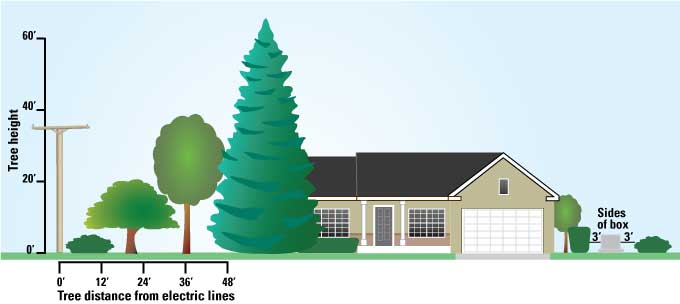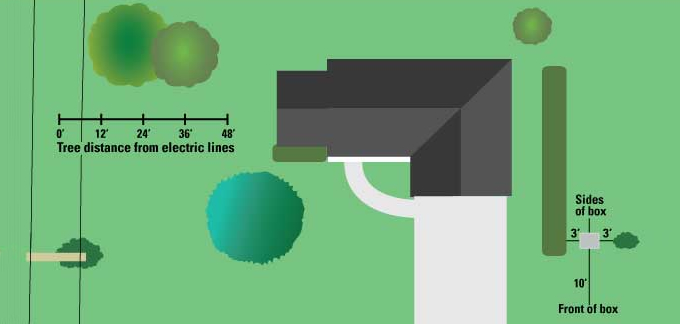Trees growing too close to power lines can cause sparks, fires, power outages and shock hazards. To avoid these problems, property owners need to make good choices when planting, and electric companies need to trim trees regularly.
Site and tree selection
A tree properly placed today can avoid problems tomorrow – especially where power lines are concerned. Here are some safety and energy-saving tips for planting.
Safety considerations
- Plant trees that won't interfere with power lines when fully grown. Small ornamental trees or shrubs that will not exceed 15 feet in height are best to plant around power lines, such as:
Serviceberry
Dogwood
Low-growing evergreens
- Trees such as maple, basswood, burr oak, white pine or spruce grow more than 40 feet high and should be planted more than 50 feet from any overhead power lines.
- Call the utility locator service at least three days ahead of any planting to check and mark the location of underground services. This service is free.
Call before you dig
Placement diagram side view

Placement diagram top view

Energy saving considerations
- To reduce cooling costs, plant deciduous trees such as maples, lindens, hackberry or thornless honey locust about 15 feet to the south, southwest or west side of buildings to provide shade from summer sun.
- To reduce heating costs, plant evergreens and shrubs on buildings’ north and west sides to block wind. Plantings around foundations also can help insulate against cold weather.
Planting trees in the right places can reduce your annual energy costs as much as 30%.
Tree planting guides
Review these resources before beginning your next tree planting project.
We Energies tree planting guide
Arbor Day Foundation’s Right Tree in Right Place
Clearances for underground service equipment

Newer developments typically have underground electric service coming from a green transformer box.
If you want to surround the box with a fence or shrubs, you must maintain safe and easy access for our maintenance work. To help us avoid removing or damaging your landscaping, make sure you have a clearance of 3 feet on each side of our equipment and 10 feet to the front (where the lock is located).